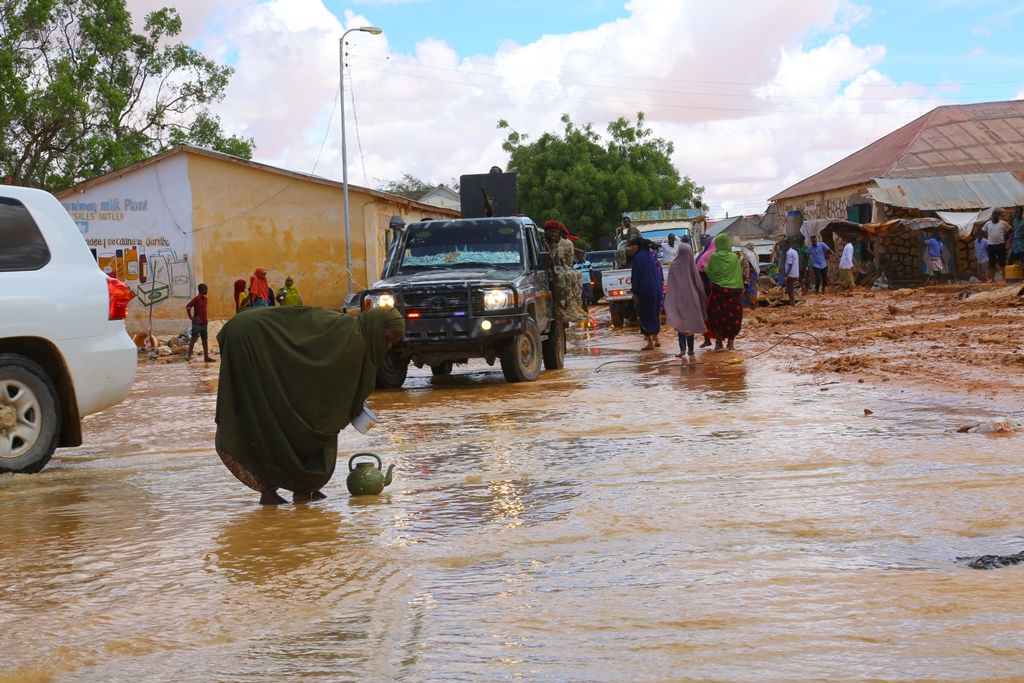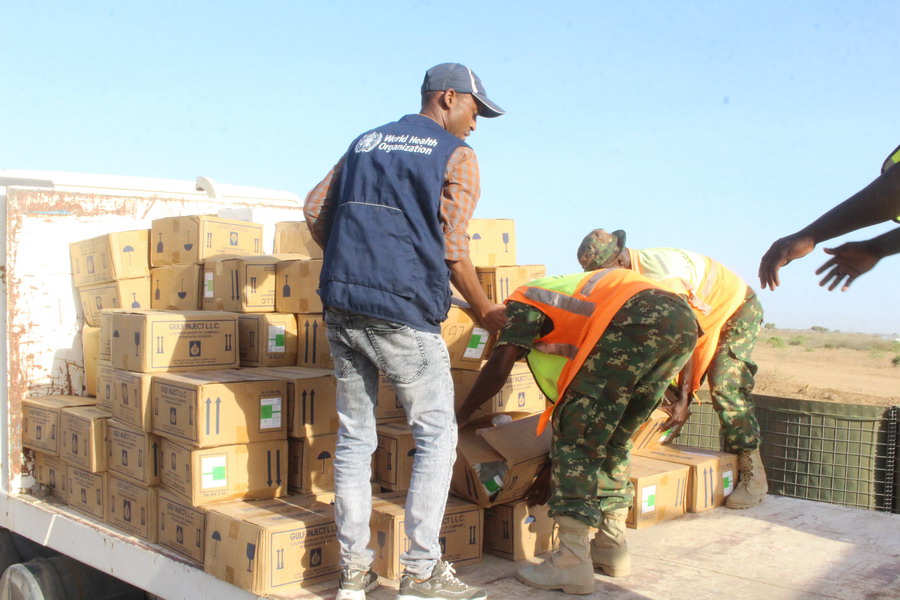
14 May 2020 – While Somalia deals with one of the world's biggest public health threats from COVID-19, which has so far claimed 52 lives in the country and infected 1219 people in less than 2 months, the country is also facing floods in the north that have killed 24 people and affected over 700 000 people in 24 districts. The flood has also displaced almost 283 000 people. Although all the 6 states have been affected by this flash flood, 3 states – Hirshabelle, Jubaland, Southwest and Puntland states – are worst affected. The flooding resulted from a sharp rise in the level of the Shabelle river following heavy and incessant rains in Somalia and Ethiopian highlands, which started in late April. As of 10 May, water levels reached 7.93 metres, which are 0.37 metres below the bank's full level of 8.30 metres.
The low lying areas of Belet Weyne town, such as Hawotako section and Koshin sections, have been acutely affected. The people displaced by the flood water are moving out of their homes to higher places in the nearby villages for shelter and are living in crowded settings. This is also raising concern about the elevated risk of COVID-19 transmission as the virus can be easily and rapidly transmissible in densely populated settings. In addition, there are concerns that the flooding may also result in an increased number of cases of acute watery diarrhoea and cholera. The country is already facing an upsurge of cholera case, especially in the areas badly affected by flooding.
Last year, the country reported a total of 3069 suspected cases of cholera, including 4 associated deaths, while during the first quarter of this year, 3193 suspected cases, including 15 associated deaths were reported, raising concerns that the flooding may elevate the risk of transmission among flood-affected displaced populations with limited access to safe water and sanitation. WHO's country office has sent urgently needed essential medical supplies, including oral rehydration solution and cholera salines for affected areas using United Nations flights.

The flood has occurred at a time when Somalia is facing the challenge of limiting community transmission from COVD-19 and its fragile health system is struggling to cope with the pace in which the outbreak is spreading. The country is also facing one of the worst desert locust infestations in 25 years with new swarms reported in all states across the country.
Despite these threats, funding for humanitarian operations in Somalia remains very low. As of 10 May 2020, the revised 2020 Somalia Humanitarian Response Plan is only 16% funded (US$ 200 million out of $1 1254.3 million). WHO’s current funding request for the COVID-19 response is US$ 25.91 million of which only 30% has so far been funded.


